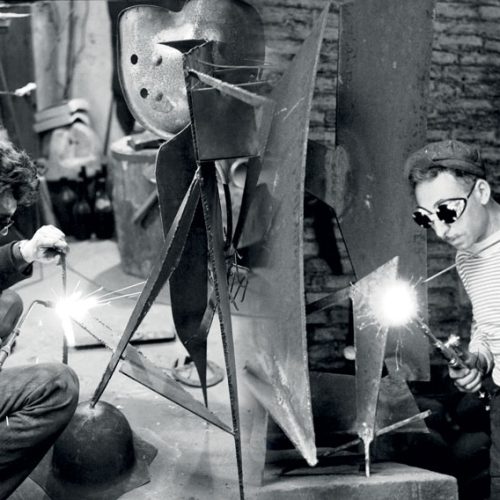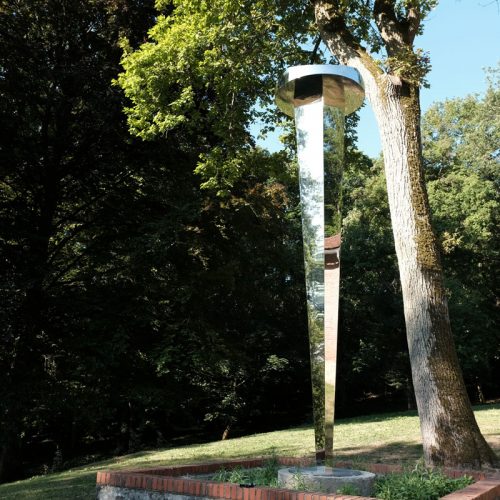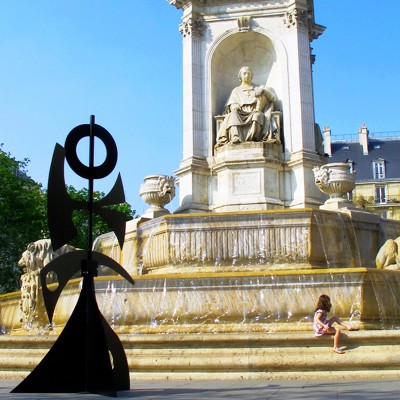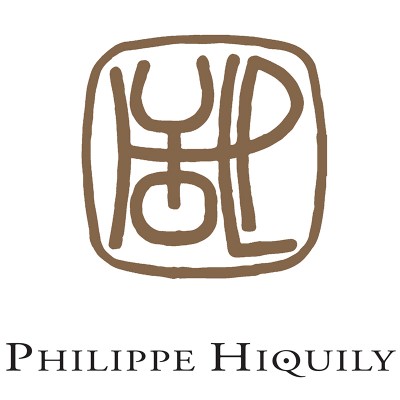PHILIPPE HIQUILY

Born in Montmartre in 1925, Philippe Hiquily is a very singular artist, sculptor, but also creator of furniture, jewellery, etchings and experimental kinetic and electronic works. The main axis of his work is to play with shapes and balance but also the “coupling” of sculptures and objects. May they be in iron, brass or steel there are always principles behind his sculptures, art must be funny, playful and esthetical. Movements, curves and materials are as many ways to give life to metal that is metamorphosed in an erotic object. From New York to Paris, museums of tribal art to the salon of French aristocracy, this lover of women, protégé of Germaine Richier, friend of Arman, César, Jodorowsky or Alain Jouffroy, this very convivial and great cigar lover, Officer of the National Order of Arts and Letters, has always known, throughout his life, how to completely overwhelm our view of sculpture.
Artworks
 ÉPICURIENNE H.115cm BlackPHILIPPE HIQUILY
ÉPICURIENNE H.115cm BlackPHILIPPE HIQUILY
 ÉPICURIENNE H.115cmPHILIPPE HIQUILY
ÉPICURIENNE H.115cmPHILIPPE HIQUILY
 Table LEDAPHILIPPE HIQUILY
Table LEDAPHILIPPE HIQUILY
 COSMONAUTE – OriginalPHILIPPE HIQUILY
COSMONAUTE – OriginalPHILIPPE HIQUILY
 L’AURIGEPHILIPPE HIQUILY
L’AURIGEPHILIPPE HIQUILY
 L’ECUYERPHILIPPE HIQUILY
L’ECUYERPHILIPPE HIQUILY
 Little housewifePHILIPPE HIQUILY
Little housewifePHILIPPE HIQUILY
 MARATHONIENNE H.360 cm NoirPHILIPPE HIQUILY
MARATHONIENNE H.360 cm NoirPHILIPPE HIQUILY
 GREEN FLOOR LAMPPHILIPPE HIQUILY
GREEN FLOOR LAMPPHILIPPE HIQUILY
 COLLIER SERPENTPHILIPPE HIQUILY
COLLIER SERPENTPHILIPPE HIQUILY
 COLLIER ACCOUPLEMENTPHILIPPE HIQUILY
COLLIER ACCOUPLEMENTPHILIPPE HIQUILY
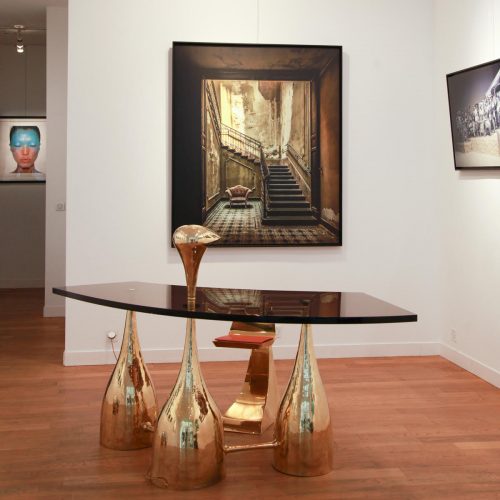 BUREAU AVEC LAMPE INTÉGRÉEPHILIPPE HIQUILY
BUREAU AVEC LAMPE INTÉGRÉEPHILIPPE HIQUILY
 LA VOIX – SynthétiquePHILIPPE HIQUILY
LA VOIX – SynthétiquePHILIPPE HIQUILY
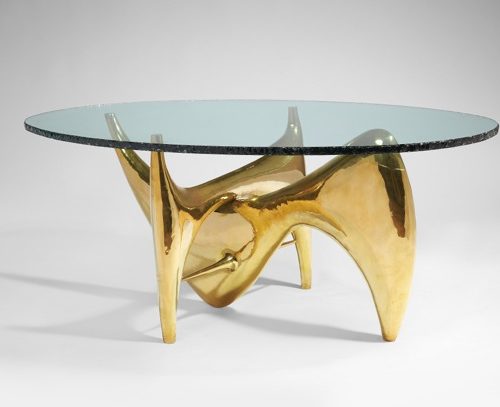 COFFEE TABLE BASED ON DRAWING FROM THE 1970PHILIPPE HIQUILY
COFFEE TABLE BASED ON DRAWING FROM THE 1970PHILIPPE HIQUILY
 Roberta & AlicePHILIPPE HIQUILY
Roberta & AlicePHILIPPE HIQUILY
 Petite GalipettePHILIPPE HIQUILY
Petite GalipettePHILIPPE HIQUILY
 Épicurienne H.180cmPHILIPPE HIQUILY
Épicurienne H.180cmPHILIPPE HIQUILY
 ÉPICURIENNE H. 275cmPHILIPPE HIQUILY
ÉPICURIENNE H. 275cmPHILIPPE HIQUILY
 Épicurienne H. 5MPHILIPPE HIQUILY
Épicurienne H. 5MPHILIPPE HIQUILY
 MARATHONIENNE – 275 cmPHILIPPE HIQUILY
MARATHONIENNE – 275 cmPHILIPPE HIQUILY
 Grande GirouettePHILIPPE HIQUILY
Grande GirouettePHILIPPE HIQUILY
 GIROUETTES MARBELLA – SHANGHAI 1MPHILIPPE HIQUILY
GIROUETTES MARBELLA – SHANGHAI 1MPHILIPPE HIQUILY
 Reorneadora – 2.2MPHILIPPE HIQUILY
Reorneadora – 2.2MPHILIPPE HIQUILY
 MARATHONIENNE H.5MPHILIPPE HIQUILY
MARATHONIENNE H.5MPHILIPPE HIQUILY
 GIROUETTES MARBELLA-SHANGHAI H.12MPHILIPPE HIQUILY
GIROUETTES MARBELLA-SHANGHAI H.12MPHILIPPE HIQUILY
 GIROUETTES MARBELLA-SHANGHAI H.350cmPHILIPPE HIQUILY
GIROUETTES MARBELLA-SHANGHAI H.350cmPHILIPPE HIQUILY
 La Grande ÉchassièrePHILIPPE HIQUILY
La Grande ÉchassièrePHILIPPE HIQUILY
 CATALOGUE RAISONNÉ PHILIPPE HIQUILY – PRESTIGE EDITIONPHILIPPE HIQUILY
CATALOGUE RAISONNÉ PHILIPPE HIQUILY – PRESTIGE EDITIONPHILIPPE HIQUILY
 LE FUNAMBULE H.75cmPHILIPPE HIQUILY
LE FUNAMBULE H.75cmPHILIPPE HIQUILY
 LE FUNAMBULE H.150cmPHILIPPE HIQUILY
LE FUNAMBULE H.150cmPHILIPPE HIQUILY
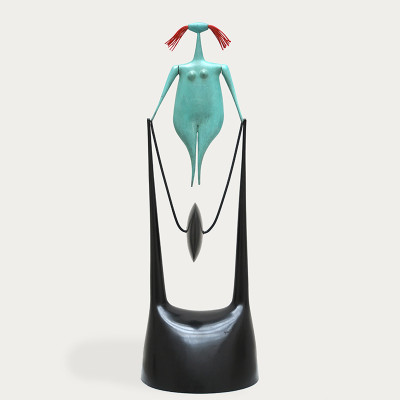 MOULINETTEPHILIPPE HIQUILY
MOULINETTEPHILIPPE HIQUILY
 GRANDE GALIPETTEPHILIPPE HIQUILY
GRANDE GALIPETTEPHILIPPE HIQUILY
 ÉPICURIENNE H.85cmPHILIPPE HIQUILY
ÉPICURIENNE H.85cmPHILIPPE HIQUILY
 GIROUETTES MARBELLA – SHANGHAI 42 cmPHILIPPE HIQUILY
GIROUETTES MARBELLA – SHANGHAI 42 cmPHILIPPE HIQUILY
 CHENG SAN H. 2mPHILIPPE HIQUILY
CHENG SAN H. 2mPHILIPPE HIQUILY
 LA SAUTEUSEPHILIPPE HIQUILY
LA SAUTEUSEPHILIPPE HIQUILY
 LA FUNAMBULEUSEPHILIPPE HIQUILY
LA FUNAMBULEUSEPHILIPPE HIQUILY
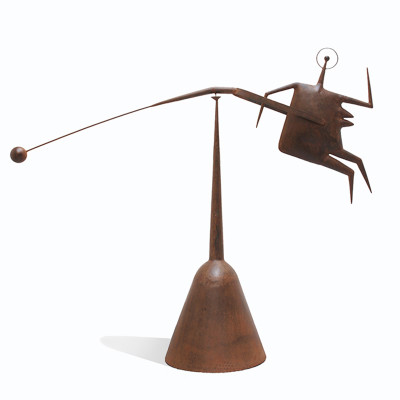 COSMONAUTEPHILIPPE HIQUILY
COSMONAUTEPHILIPPE HIQUILY
 GRANDE COSMONAUTEPHILIPPE HIQUILY
GRANDE COSMONAUTEPHILIPPE HIQUILY
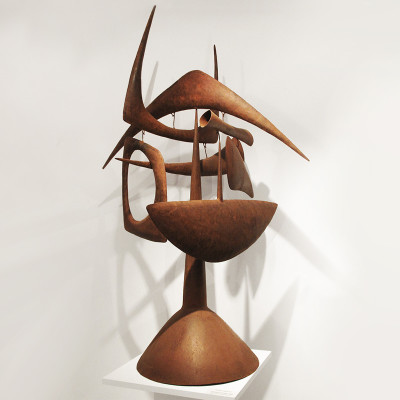 REORNEADORA – 110cmPHILIPPE HIQUILY
REORNEADORA – 110cmPHILIPPE HIQUILY
 CHENG ERPHILIPPE HIQUILY
CHENG ERPHILIPPE HIQUILY
 CHENG YIPHILIPPE HIQUILY
CHENG YIPHILIPPE HIQUILY
 VIRGINIEPHILIPPE HIQUILY
VIRGINIEPHILIPPE HIQUILY
 MARIONNETTEPHILIPPE HIQUILY
MARIONNETTEPHILIPPE HIQUILY
 MARIONNETTE MarronPHILIPPE HIQUILY
MARIONNETTE MarronPHILIPPE HIQUILY
 ÉPICURIENNE H.85cmPHILIPPE HIQUILY
ÉPICURIENNE H.85cmPHILIPPE HIQUILY
 TABLE FEMMEPHILIPPE HIQUILY
TABLE FEMMEPHILIPPE HIQUILY
 LAMPADAIREPHILIPPE HIQUILY
LAMPADAIREPHILIPPE HIQUILY
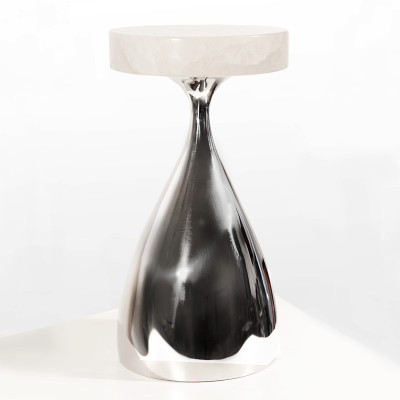 QUILLE – STAINLESS STEEL AND TOP WITH ROCK CRYSTALPHILIPPE HIQUILY
QUILLE – STAINLESS STEEL AND TOP WITH ROCK CRYSTALPHILIPPE HIQUILY
 QUILLE – Brass with FOSSILIZED WOOD STONEPHILIPPE HIQUILY
QUILLE – Brass with FOSSILIZED WOOD STONEPHILIPPE HIQUILY
 QUILLE – BRASSPHILIPPE HIQUILY
QUILLE – BRASSPHILIPPE HIQUILY
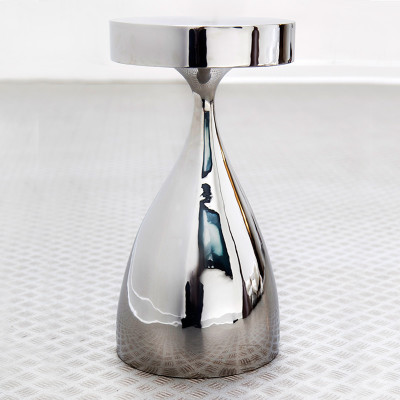 QUILLE STAINLESS STEELPHILIPPE HIQUILY
QUILLE STAINLESS STEELPHILIPPE HIQUILY
 SELLETTE – BlackPHILIPPE HIQUILY
SELLETTE – BlackPHILIPPE HIQUILY
 SELLETTE – RustPHILIPPE HIQUILY
SELLETTE – RustPHILIPPE HIQUILY
Store
 Summer WeathervanePHILIPPE HIQUILY
Summer WeathervanePHILIPPE HIQUILY
 LA FEMME GRENOUILLEPHILIPPE HIQUILY
LA FEMME GRENOUILLEPHILIPPE HIQUILY
 La CrinièrePHILIPPE HIQUILY
La CrinièrePHILIPPE HIQUILY
 Girouette HiverPHILIPPE HIQUILY
Girouette HiverPHILIPPE HIQUILY
 ÉpicuriennePHILIPPE HIQUILY
ÉpicuriennePHILIPPE HIQUILY
 MarathoniennePHILIPPE HIQUILY
MarathoniennePHILIPPE HIQUILY
 DVD – PHILIPPE HIQUILY – L’ÉLOGE DE L’ÉROTISME EN SCULPTUREPHILIPPE HIQUILY
DVD – PHILIPPE HIQUILY – L’ÉLOGE DE L’ÉROTISME EN SCULPTUREPHILIPPE HIQUILY
 PHILIPPE HIQUILY CATALOGUE RAISONNÉ, 2012PHILIPPE HIQUILY
PHILIPPE HIQUILY CATALOGUE RAISONNÉ, 2012PHILIPPE HIQUILY
Exhibitions Gallery loft
Publications
Biography
Philippe Hiquily, a reluctant hero, came into this life on a path that would often tempt him to stray away under the onslaught of an unpredictable destiny. His incongruous endeavors seemingly deviating from the initial goal only appear to do so and actually push it forward in a single direction. His path reveals a unity captured by his work. An alert mind, actively engaged in restless questioning, attests to an independence that kept him at a distance from groups. Never fully agreeing with the Surrealists, nor with the abstract artists, he exploited an aesthetic vein whose enchantment would never run dry.
Philippe Hiquily was born in Montmartre in 1925. Upon completing his secondary education at Victor Duruy Lycée, at age 18 he enlisted in the French Resistance alongside his father. When the war ended, he briefly enrolled in the School of Beaux-Arts of Orléans before joining the Leclerc division and leaving for Indochina where he was from 1945 to 1947. After returning to France, he enrolled in the School of Beaux-arts of Paris and studied sculpture in the studios of Janniot and de Gimond where he became friends with César, Albert Féraud and Michel Guino. All of them would choose to work in metal, after acquiring basic knowledge in sculpture. They mastered the study of live models and the steps involved in modeling and working in plaster, clay and ceramic to hone their manual dexterity. Hiquily left the School of Beaux-Arts in 1953 after receiving the Prix de Sculpture for his Neptune, a monumental work in iron. However, he rejected any system that would hinder the independence of his work.
The fifties: a time for experimentation and initiation
Through his Hellenist father, he discovered Greece and developed a passion for prehistory and archeology; later he often visited the Musée de l’Homme, from where he drew his sources of inspiration, particularly the Paleolithic Callipygian Venuses that would have a profound effect on his work.
Acquiring a studio in 1954 on rue Raymond Losserand (that he kept until 1998) gave him the opportunity to work in total freedom. Yet, life’s realities caught up with him. Having just married, he produced small pieces that he sold at the Galerie du Siècle on the boulevard Saint-Germain to earn a living. During one year, he frequently visited the studio of Germaine Richier, and gaining her trust, he made original pedestals for her sculptures. There he met Kijno, Claude Mary and Robert Müller.
His evolution in the visual arts had begun. The elongated shapes were inspired by the Cycladic idols. The scarcity of materials from scrap merchants led to his developing a language whose narrative was part of his creative process, quickly distinguishing him from his contemporaries. The Julio Gonzalez retrospective in 1952 at the Musée d’Art moderne de Paris introduced him to direct cutting and autogenous welding of sheet metal. Hiquily adopted the “Sphyrelaton” technique used by Greek sculptors in the Archaic period, in which the metal was pushed out and soldered (Charioteer of Delphi).
With his first mobiles, movement became integral to his sculpture, giving free rein to his innate inventiveness: Fontaine mobile(1954) is inspired by a moving acoustic structure made of bamboo used to scare birds away from the rice fields of Laos, where he was in 1945. Automate (1955) and Danseur de corde (1955) use a mechanism to set them in motion, a technique he would develop later with greater sophistication. The search for balance reached its pinnacle with L’Homme à la Bicyclette (1955), purchased the following year by the National Museum of Modern Art of France (1955). He met Calder, whose mobile pieces he admired, at Les Deux Magots.
Hiquily developed lightness of forms: Palmiphère (1955), aerial structures and the feeling of weightlessness with tightropes:Noctambule (1955). The introduction of motors gives his sculpture an entirely fresh autonomy. Juke Box (1955) was inspired byDéserts by Varèse, which he heard when it was first performed in Paris. His moving sculptures that can attain equilibrium on their own in space were coexisting with hieratic figures inspired by African art: African Queen (1953) was presented at the Galerie Palmes during his first solo exhibition in Paris in 1955.
The symbolic schematicism of the Vénus de Lespugue discovered during his visits to the Musée de l’Homme emerged in response to the Cycladic hieraticism. This thousand-year-old piece contains the seeds of Hiquilien creatures. A tiny head on top of enormous breasts, like mortar shells, and protruding buttocks through which he “searches for volumes outside of any anecdote.” Alain Bosquet, signatory to the text that accompanied his second solo exhibition at the Galerie du Dragon, describes objets-mères(maternal objects). Mother goddesses and fertility goddesses: Accouchement (1957), in which female idols respond to iconic sex symbols. With their constantly changing forms and enigmatically functioning appendages, they reflect the insect kingdom. They foreshadow their femininity in all its seductive and castrating ambiguity. His anthropomorphic figures perched on stilts, crowned with a Lilliputian head, embody “provocative” beauty.
An increasingly schematic formal search sets off an evolution. Form and function coexisted in the gears, cogs and engine parts that would become integral to most of his sculptures. Hiquily returned to the principle of incorporating a found object, ushered in with La Pelle (1954). With Juke Box (1955) and the Fontaines mobiles , he continued his creative adventure completely independent of current artistic trends; Fougasseries I and II (1959) remained isolated in abstract temptation, before a style emerged. His desire to reconcile art and life drew him to the ready-made works of Marcel Duchamp through the use of manufactured objects and traditional metal work: L’Homme qui marche (1958) was powered by a counterweight system generated by an 18th century rotating spit. It foreshadows a long list of enormous moving sculptures created by Hiquily in reclaimed rusted iron and sheet metal with a phosphoric acid patina.
His Girouette, standing 12-meters high in steel and bearings and installed at Marbella in 1963, marked the beginning of the monumental pieces. Urban architects sought out Hiquily via the “1%” reserved for artistic works in public construction projects: schools in Mont-de-Marsan (1966) and Saliès (1968), the Bordeaux University Technology Institute (1972), the Saint-Marc de Brest Lycée (1973), the Tournebonneau School Complex in Reims (1975), the Paul Cézanne Secondary School in Mantes-la-Jolie (1975), the secondary school in Sucy-en-Brie and the Colonel Fabien Stadium in Vitry-sur-Seine.
The sixties: Hiquilien style, the provocative era
Hiquily’s sculpture gradually became identified with what Alain Jouffroy would call “erotic reality.” La Motocyclette exhibited at the May 1964 Salon and purchased four years later by the Musée d’Art moderne de Paris is an iconic example of this. Erected as an unattainable divinity—rigid, frozen, beautiful and disturbing—and perceived as desirous and desired, the woman metamorphosed from a statue of a mythical mother-figure to that of a praying mantis, its function transforming from a matrix to lustful seduction. The sexual character of these beings with insect-like jaws simulating erotomanic actions is reminiscent of the Eros myth. Le Copulateur, forged in 1959, anticipates the Zoomorphes series that was met with great success at the New York exhibition, in The Contemporaries Gallery where all the pieces would sell on opening night, including one to the Guggenheim Museum. This American interlude would be followed by a second in 1961 in the company of Jean-Jacques Lebel and Alain Jouffroy . One year earlier, the three friends had created a show “The Anti-Process” with André Pieyre de Mandiargues, Marie-Laure de Noailles, Hundertwasseur, Kudo and Tinguely, in reaction to surrealism. Hiquily experimented with his Machine à peindre , invented in New York, in response to “action painting.”
His language is established in his style. Eros took possession of the iconography of the Hiquilien approach. The God of Love is also the god of the powerful creator. He is desire. The “erotic reality” takes on its full meaning by giving us “the most complete and true image of the reality of erotic representation…Man is the key, woman is the lock…” (Alain Jouffroy, first monograph published by Georges Fall in 1962). The lock is explicitly cited in Karl (1962) exhibited at Claude Bernard Gallery in 1964. In 1973, his recent sculptures on the theme of coupling were exhibited at Hervé Odermatt Gallery. They are ostensibly sexual, especially 08-15(1973), the model number of the German machine gun used during World War I, inserted into a woman’s genitals. The sculpture was purchased by Michel Tronche for the Modern art museum of Paris .
In the early sixties, a new development emerged—the use of a Kraftformer that enabled him to stretch and form sheet metal, and smooth it out with a planishing hammer. His sculpture alternates hollow, flat and round forms. Hiquily rejects the term stylization to describe his work, preferring to call it “simplification.” His figures tend towards a deliberate primitivism and abstraction. The titles, inspired by encounters, trigger the inquisitive imagination. Ready for irreverence, they provoke, in sync with the aggressiveness of the forms.
“If art doesn’t provoke, I don’t see how it is art.” (Hiquily)
His sculpture inverts roles. From a “motherly object,” woman becomes a “sex object,” for which he multiplies the interpretations: La Vénus de Shanghaï (1964), La femme au foyer (1965), Face à main (1965), and La Secrétaire 1966), who proudly has a Remington typewriter on her lap—a symbol of modernity.
Beginning in 1964, Hiquily regularly turned to everyday objects: L’Horloge (ou La femme) (1962), a feminine form soldered to a dial without a needle. On an esthetic and metaphoric level, the coupling of the object and the figure combine novel materials. It is the coupling of the imaginary and the real, of art and non-art. Hiquily’s sculptures are dictated by an ever-subversive inventiveness. From now on, crude postures are central to the Hiquilien dialectic. For Jean-Jacques Level, “exhibition aims to become a metaphor of the consumer society.”
In 1966, Hiquily switched from sheet metal to brass due to problems he encountered with supplies. More flexible, polished brass takes on a honey-colored patina. The artist experimented again in hand-to-hand combat with the metal for a smooth, polished feminine universe destabilized by the chasm between the invented forms of art and utilitarian objects. Art becomes a medium. Through the exploration of a formal plurality in the experimental practice of sculpture, Hiquily tackles the mobile. In 1964, Marie-Laure de Noailles’ order of a pedestal table prompts furniture orders from Henry Samuel. He works for the famous collectors Philippe de Rothshild, Teddy Van Zuylen , Louise de Vilmorin and Jacqueline Delubac. In 2005, Yves Gastou Gallery produces a large exhibition accompanied by a catalog prefaced by Pierre Cabane, in which he presents his editions of Hiquily furniture from the 1960s and 1970s.
Hiquily is telling us that we don’t know how to look at reality. Eros is caught by Thanatos who is invited into the artist’s work and questions us on the violence of war with La Compañera , (created during his stay in Cuba during the May Salon in 1967), and on the power relationships between man and woman and the object of desire and pleasure in the game of love and death with La Distributrice de cigares (1967), and its variation Carmen in 1985.
With Elle fait tourner la tête à M. Elias Howe Junior , the phallic needle simulates the genitals for a mechanical act, even more apparent with Le Coït (1971), and revisited in 1990 with Tac tac bon . This over-sexualisation runs throughout all of Hiquily’s work, and he denounces conformism with “a constant irony of the doing it” (Alain Jouffroy). This is complemented by caustic humor. Hiquily’s propensity for self-mockery is enduring: Autoportrait of 1972 (a parody of Rodin’s The Thinker) and the Siège érotique(1975), where the subject obliterates boundaries with art.
In 1976, the first retrospective of his work was held at the Maison de la Culture d’Amiens. Forty sculptures created between 1954 and 1976 were exhibited. These included the brass sculptures to which Hiquily attached a photograph or a photoengraving, a recent reproduction process that he reworked in acid: Meei–Meei (1973), a portrait of his wife Yen.
Maturity
At the end of the 1970s, he again turned all his attention to movement. Fascinated by Calder’s work, he extended it by repeating the balancing elements to synthesize the underlying intuition of duration and movement, based on Bergson and Baudelaire’s “Imaginary thought.” The Fontaine mobile I (1978) and Fontaine mobile II (1979) recapture what he had created in 1954. He adapted these balanced compositions with La Chute and Watergame (1982), whose surprise effects closely resembled Tinguely’s machines. The artist who had been inspired by a passion for motors and dismantled clocks as a child, now reconnected with the mechanical sphere as a game of exhilarating freedom. In 1980, he participated in the “Energie et mouvement” exhibitions at the Maison de la Culture in Reims and in 1982 “Machines…machines” at the Centre Culturel in Brétigny. His creative inventiveness was renewed when he returned to mechanical elements, such as marbles: Bill Trappe (1980). It demonstrates a precision and an exactitude in the movements that he will push to the extreme in abstract compositions such as Swinging Sex (1983), Pneumotomate (1983) andSinusoïde Lady (1984).
This is also when Hiquily places his sculpture into a social context, integrated into urban life with the assistance of public commissions. Between 1981 and 1982, he created the 6-meter high Marathonienne on commission for the city of Vitry-sur-Seine, which was recently produced in various sizes.
Hiquily is first and foremost an artist. Not a theorist, he demands pleasure and enchantment that he intends to share by urging us to set the work into motion. This dimension overturns our relationship to traditional sculpture. We touch it, caressing the sculpture at the center of an interventionist approach with the introduction of a seesaw: La Funambuleuse (1981), first of a series; Pasiphae(1985), placed on a glider, heralds in Rocking Chair (1989). These feminine figures perform “pirouettes” (1985–1990) and “somersaults,” bringing Hiquily back to large formats: La Grande Galipette (L’Escarpolette) (1988). They then join the circus “tightrope walkers” (1987–2000), reaching the point of absolute equilibrium in the 1990s: Claudinette (1999) and La Sauteuse(2002).
Hiquily’s meeting with the dealer Patrice Trigano led to a series of bronze editions. Régis Bocquel would cast about forty pieces between 1987 and 1995. Enticing, they are attired in robes with a turquoise, brown or black patina. The polish of the perfectly smooth pieces doesn’t take away from concealing the mystery. The smaller figures are Hiquilien forms with miniscule heads topping limbs as slender as needles: Célestine (1987) and Mimi Patte en L’air (1988). Hiquily heads into a new direction with the “sculpture object”: a jewelry box for La Croqueuse de diamants (1986), a fountain for Dame Pipi (1987), and a safe for La Banquière (1988).
The 1980s saw an increase in the number of small and medium-size sculptures. These were stretched out vertically: La Môme au masque (1986); installed on rod pedestals with the “Rêveuses” series: Han Han (1987); or fixed on a vertical axis: Chrysalide(1987). A second series of bronze editions with Patrice Trigano closed this decade.
Final period: Accomplishment and fulfillment
Philippe Hiquily continued to formally explore the themes of the couple and relationships between men and women, for whom he tries to quell the violence. This violence was still detectable in La Fente (1990), which echoes L’Empalée of 1966, and Le Viol of 1991 in polystrene bas-relief. Tensions are tempered with L’Ambigüe (1990), a bisexual being that joins together both sides of the same face and makes the transition. Humor is still apparent in less conflictual relationships: Tac-Tac Bon (1990) and La Gifle(1991), an incongruous dispute. Woman—mischievous ingénue and chaste—shamelessly emancipates herself: Sylvia (1993), provocative Nini la motarde (1993) perched on an old 1925 Terrot motorcycle. In 1991, he undertook a series of dancers, star attractions evoking big names: Joséphine (Baker) 1991, Zizi (Jeanmaire) 1992 and Lisette (Malidor) 1992…balancing on a high wire, except for Lova (Moor) 1993. Temptress and seductress, the liberated woman displays her nudity for a shared voyeurism.
In 1995, the retrospective at the Couvent des Cordeliers in Châteauroux brought the sculptor national recognition from the general public.
This marks his return to integrating objects considered as formal elements, giving direction to the sculpture’s composition: Chinese bells and cobbler’s feet for La Cantonnaise (1995), wheels and gyrating movement rousing his Hellenic love for L’Aurige (1997). Overlapping movement complicates the rotations, giving the sculpture even greater fascination: L’Equilibriste au cerceau (1999).
In 2000, Hiquily returned to the forged metal that had defined his work in the 1960s. He abandoned the brass patinas and his small feminine figures and their cabrioles in favor of mythic woman: Walkyrie (2000), La Vénus du Karawari (2000) and Parabella (2008). He was particularly interested in the face while the upright body, feet together, follows a vertical axis: Renaissance de Vénus (2000). Or a verticality leading back to the frontality and monumental: La Sévillane. He developed volume from flat elements inspired by his monumental sculpture in Vitry. Towards the mid-2000s, he worked with cardboard models: Lolita Square (2005) and L’Epicurienne(2010) or in iron, Girouette Marbella-Shangai, which was reinterpreted in a 12-meter high edition. This sculpture was installed in Jing’an Park in Shanghai , for the 2010 World Expo to which Philippe Hiquily was invited to participate. In 2012, the Catalog Raisonné Philippe Hiquily, 1984-2011, is published by Loft Gallery.
Philippe Hiquily died on March, 2013, his birthday, in Paris.
Philippe Hiquily combined control and improvisation, speculation and dreaming, rigor and humor. The mechanical aspect remained central to an exhilarating freedom and imagination that revived wandering movements, in a desire to place his sculpture in time. Between eloquent stylization and ambiguous symbolism, his modern goddesses are transformed into objects of desire that trap us in their deceptively innocent game. The ambivalence of the Eros myth underlies an aggressive, perverse eroticism that stretches to defuse the hypocrisy of a moral castrator. Hiquily has created a protective image of woman—dual, enigmatic and universal. It identifies his unified journey, undisrupted, with an emblematic work that places Hiquily among the great creators of the second half of the 20th century.
Career
Solo Show
1955
Galerie Palmes, Paris, France
1958
Galerie du Dragon, Paris, France
1959
The Contemporaries, New York, USA
1961
The Contemporaries, New York, USA
1963
C.A. (Institute of Contemporary Art), London, UK
1964
Galerie Claude Bernard, Paris, France
Galerie du Dragon, Paris, France
1973
Accouplements, Galerie H. Odermatt, Paris, France
1976
Pièges à louves, Galerie Bideau, Paris, France
Quarante sculptures de Hiquily, Maison de la Culture d’Amiens, France
1984
Sculptures récentes, F.I.A.C. Galerie Fabien Boulakia, Paris, France
1987
Pièces pour Clac-son, Cité des Sciences et d’Industrie à la Villette, Paris, France
1988
Dessins, sculptures, Galerie LOFT, Paris, France
1989
F.I.A.C., Galerie Patrice Trigano, Paris, France
1990
Objets sculptures, JGM Paris, France
1991
Foire de Bâle, Galerie Patrice Trigano, Paris, France
Le chemin de la mémoire et de l’inspiration, Espace Art Brenne, Concremiers, France
1994
Sculptures récentes, F.I.A.C., Galerie Patrice Trigano, Paris, France
1995
Couvent des Cordeliers, Châteauroux, France
1997
Fers 1954-1958, JGM Galerie, Paris, France
2000
Fers pièces uniques, Galerie LOFT, Paris, France
2001
Hiquily, fers uniques, Galerie Ratton-Hourdé, Paris, France
2003
F.I.A.C., Galerie Patrice Trigano, Paris, France
Bologne Faire, Galerie Patrice Trigano, Paris, France
2004
F.I.A.C., Galerie Patrice Trigano, Paris, France
2005
Bronzes, Galerie Patrice Trigano, Paris, France
Furniture, Galerie Yves Gastou, Paris, France
2007
Hiquily Fer, Galerie Ratton Hourdé, Paris, France
2008
Retrospective exhibition, Galerie LOFT, Paris, France
2010
Installation of "Girouettes Marbella-Shangai H.12m" in Jing-An Park for the World Expo, Shanghai, China
2011
Hiquily, amazing sculpture, Modern Art Gallery, Taiwan
Brafa, Tour et taxis, Galerie LOFT, Paris
2012
Galerie Jean-Marc Lelouch, Paris, France
Catalogue Raisonné Philippe Hiquily published by éditions LOFT
Exhibition of Monumental sculptures « La Marathonnienne », « L’Epicurienne » and « Girouettes », Places Saint-Germain-des-Prés & Saint-Sulpice, Paris, France
Retrospective exhibition, Mairie du VIème arrondissement de Paris, France
Sculptures, Hôtel Lutetia, Paris, France
Synthétiques, Galerie LOFT, Paris, France
Bronzes, Galerie Patrice Trigano, Paris, France
Mobilier, Galerie Yves Gastou, Paris, France
2013
Girouettes (Monumental sculptures), Al Maaden Sculpture park, Maroc
2014
Retrospective exhibition, Galerie LOFT, Paris, France
Solo show, Donjon de Vez, France
2016
Philippe Hiquily, Galerie Laurent STROUK, Paris, France
2019
Philippe Hiquily, Musée de la Vallée de la Creuse, Eguzon, France
Group exhibitions
Salon de mai, Paris, 1956, 1957, then each year from 1959 to 1977, and in 1985 et 1986
1957-1960
Salon de la Jeune Sculpture, Paris, France
1977-1980
Salon de Montrouge, France
1958
Sculpteurs français, Musée Rodin, Paris, France
Sculpteurs contemporains, Galerie Claude Bernard, Paris, France
1959
Carnegie Institute, Pittsburg, USA
Bestiaire, Galerie de Varenne, France
Histoire naturelle, musée Rodin, Paris, France
Sculpteurs contemporains, Galerie Claude Bernard, Paris, France
Group exhibition, Galerie Daniel Cordier, Paris, France
Première biennale de Paris (prix de la Critique), France
1960
Salon de mai, Zürich, Switerland
Le Surréalisme, Galerie Daniel Cordier, Paris, France
Sculpture Contemporaine, Musée d’Art et d’Industrie, Saint-Etienne, France
L’Antiprocès, Galerie des Quatre Saisons, Paris, France
1961
Salon de mai, Amsterdam, Netherlands
Le mouvement dans l’art, Amsterdam, Stockholm, Copenhague, Danemark
Biennale d’Anvers, Belgium
Sculpture contemporaine internationale, Musée Rodin, Paris, France
L’Antiprocès, Milan, Italy
Exposition internationale de bijoux modernes, London, UK
1962
Salon de mai, Tokyo, Japan
L’objet. Antagonismes II, Musée des Arts décoratifs, Paris, France
International Exhibition of Contemporary Art, Christian Action, London, UK
Anthologie des formes inventées, Galerie du Cercle, Paris, France
1963
Actualité de la sculpture, Galerie Creuze, Paris, France
Œil de bœuf, Galerie 7, Paris, France
1964
Cinquante ans de collage, musée d’Art et d’Industrie, Saint-Etienne, France
1965
Tokyo Biennial, Japan
Anvers Biennial, France
Groupe I, musée d’Art moderne, Paris, France
La Main, Galerie Claude Bernard, Paris, France
Symposium de sculpture, Montréal, Canada
1966
Grands et jeunes d’aujourd’hui, Musée d’Art moderne, Paris, France
L’Objet II, Galerie Lacloche, Paris, France
Le corps, Galerie du Dragon, Paris, France
1967
Le portrait, Galerie Claude Bernard, Paris, France
El Salon de Mayo, Havana, Cuba
Grands et Jeunes d’aujourd’hui, Musée d’Art moderne, Paris, France
1968
The Obsessive Image, London, UK
1969
Depuis Rodin, Musée municipal, Saint-Germain-en-Laye, France
1970
La sculpture dans la cité, Reims, France
1971
Habité, Hôtel Royal Luxembourg, Nice, France
1972
La table de Diane, Galerie Christofle, Paris, France
1973
Les masques, Galerie Germain, Paris, France
Galerie Fred Lanzenberg, Brussels, Belgium
Masters of Modern Sculpture, Seibu Museum, Tokyo-Osaka, Japan
1974
Premier Salon International d’Art Contemporain, Paris, France
The Sculptor a Draughtsman, JPL Fine Arts, London, UK
Art Video Confrontation 1974, ARC 2, Musée d’Art moderne, Paris, France
1975
Siège-Poème, Maison de la culture, Créteil, France
Image synthétique, Galerie Cour d’Ingres, Paris, France
Troisième biennale internationale de la Petite Sculpture, Budapest, Hungary
1976
Les boîtes, ARC 2, Musée d’Art moderne, Paris, France
1977
Les amis de Breit Breitenbach, Galerie La Dérive, Paris, France
Biennale de Paris, Rétrospective des cinq premières biennales, France
Salon de Montrouge, France
1978
Exposition des acquisitions, Musée d’Art moderne de la ville de Paris, France
1979
Les uns par les autres, Musée des Beaux-Arts, Lille, France
Foire internationale d’art contemporain, Galerie Fabien Boulakia, Paris, France
1980
Salon de Montrouge, France
Foire internationale d’Art Contemporain, Galerie H. Odermatt, Paris, France
Depuis 1955, Galerie du Dragon, Paris, France
Energie et mouvement, Maison de la culture d’André Malraux, Reims, France
1981
Depuis 1955, Max Clarac-Sérou, maison de la culture, Orléans, France
Formes et rituels, Château d’Ancy-le-Franc (Yonne), France
Foire internationale d’art contemporain, Galerie Fabien Boulakia, Paris, France
1982
Le Dessin, Galerie Breteau, Paris, France
Machins… Machines, Centre culturel communal de Brétigny, France
La sculpture animée contemporaine, Château de Braux, Sainte-Cohière, France
1983
Salon de Montrouge, France
1984
Objets et meubles, Galerie Eolia, Paris, France
1986
Salon de mai, Paris, France
1987
Insolitudes, Saint-Herblain, Nantes, France
Clac-Son, Cité des sciences et de l’industrie de La Villette, Paris, France
1988
Dessins, sculptures, Foire internationale d’art contemporain, Galerie LOFT, Paris, France
1989
César, Hartung, Hiquily, Foire internationale d’art contemporain, Galerie Trigano, Paris, France
1990
Foire de Bâle, Galerie Trigano, Paris, France
1991
Participe à la IIIe biennale Internationale de Matera, Italy
1994
Foire de Caracas avec la Galerie Mondolfi
2003
F.I.A.C. avec la Galerie Patrice Trigano, Paris, France
Foire de Bologne, Galerie Patrice Trigano, Paris, France
2004
F.I.A.C. avec la Galerie Patrice Trigano, Paris, France
2007
Salon du Collectionneur (Présentation d’une Marathonienne)
2009
Sculpture et Sensualité (Philippe Hiquily et Wang Keping), Galerie LOFT, Paris, France
Works made to order for 1% Project
1966
Lycée de Mont-de-Marsan, Landes, France
1970
C.E.S. Salies-de-Béarn, Salies-de-Béarn, France
1972
I.U.T. Bordeaux I, Bordeaux, France
1973
Lycée Saint-Marc, Brest, France
1975
Groupe scolaire Tournebonneau, Reims, France
C.E.S. Paul-Cézanne, Mantes-la-Jolie, France
C.E.S. Sucy-en-Brie, Sucy-en-Brie, France
1982
Stade Colonel-Fabien, Vitry-sur-Seine, France
Public collections
Musée national d’art moderne, Paris, France
Fond National d’Art Contemporain, La Défense, France
The Salomon R.Guggenheim Museum, New York, USA
The Museum of Modern Art, New York, USA
Musée d’Art et d’Industrie, Saint-Etienne, France
Musée d’Art Contemporain, Montréal, Canada
Hirshhorn Museum, Washington, USA
Musée d’Art Contemporain, La Havane, Cuba
Laurence Marcus Museum, Texas, USA
Centre Georges Pompidou, Paris, France
